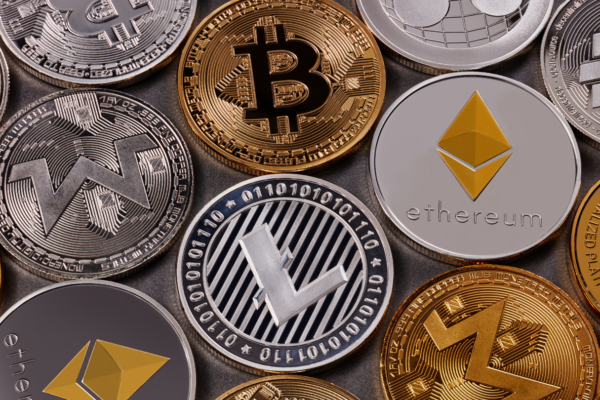What is Polygon (POL, ex-MATIC)? Is it halal?

IW
IFG Staff Writers
8 min read
Last updated on:
Polygon is a layer-2 scaling solution for public blockchains. Layer-2 simply means it works on top of an existing blockchain. It’s an Ethereum-based platform that wants to make Ethereum scalable by providing cheaper and faster transactions.
As a scaling solution for smart contract platforms with no inherent impermissible activities, we believe Polygon is halal.
However, care needs to be taken to ensure that Polygon doesn’t overwhelmingly become associated with haram activities. Read on for a much deeper dive into Polygon itself and the Islamic views on it.
What is Polygon?
Polygon is a layer-2 solution built on the Ethereum network designed to help it scale with demand. Ethereum, the second-largest cryptocurrency, is a layer-1 blockchain and is the original smart contract platform.
Ethereum’s network has become congested as demand has exploded, which has led to slow transactions and expensive transaction (gas) fees. For more on Ethereum, read our deep dive here.
Ethereum is trying to solve its scaling issues with planned upgrades. However, this is unlikely to be enough and scaling solutions like Polygon will have to pick up the slack.
Polygon achieves this through the use of sidechains, which is a type of blockchain. These sidechains operate adjacent to the main blockchain and increase the scalability of the main network.
Polygon wants to attract developers who are building decentralized applications (DAPPs). DAPPs are like regular applications with a few key differences. They are built on decentralised networks and based on smart contracts combined with a frontend user interface.
Smart contracts are self-executing agreements that automatically execute certain actions once the predetermined conditions have been met. It can be summarised as an if-then protocol. If the conditions are met then an action is performed. It’s written in code and you can’t argue with it.
By enabling DAPPs that are fast, user-friendly and have low transaction fees, Polygon believes it can bring mass adoption to the Ethereum network.
How does Polygon work technically?
The main component of Polygon’s architecture that you need to understand is its sidechains.
A sidechain is a blockchain that functions as a transaction network which connects to the main blockchain (Ethereum). This connection allows assets to flow between them.
To picture this, think of Ethereum as the main road for vehicles to travel. Over time this road gets congested, so a side road is built to ease congestion. This side road also has higher speed limits and is connected to the main road allowing vehicles to crossover whenever. This is how Polygon works with Ethereum.
Polygon’s sidechains are of two types: secured chains and stand-alone chains.
Secured chains rely on the security of the main chain (Ethereum). Whereas stand-alone chains are distinct blockchains that are compatible with Ethereum but take care of their own security. Stand-alone chains allow for more flexibility based on the needs of the project.
Sidechains allow Polygon to continuously scale. Polygon’s proof-of-stake solution has transaction speeds of up to 7,000 transactions per second (sometimes written as tx/s).
If you continue to add sidechains, this transaction speed could theoretically reach millions of transactions per second. In contrast, Ethereum has a current tx/s limit of 15.
Polygon uses a proof of stake (POS) consensus mechanism to approve transactions and add them to the blockchain. This contrasts with Bitcoin and Ethereum (for now), which use proof of work (POW).
POW is where miners compete to solve problems to win the right to certify blocks of transactions and obtain a block reward of tokens in the process plus the transaction fees.
In POS, instead of miners certifying transactions, you have ‘validators’. These validators are generally chosen at random based on how much of the network’s token they have locked up (i.e. their stake).
With Polygon, validators are chosen through a regular on-chain auction process. POS is popular as it requires considerably less energy than POW, although POW proponents argue that their method is more secure.
What are the use cases of Polygon?
Polygon enables many use cases. Here are some of the main ones:
- Payments. Making instant and cheap payments accelerates the development of blockchain applications. It also makes the crypto space more user-friendly and will increase mass adoption.
- Decentralized Finance (DeFi). DeFi is essentially finance conducted without a central authority (banks, governments etc). Rather, it is an internet-based peer-to-peer financial system based on blockchain technology. For more on DeFi, check out our deep dive here.
- Blockchain gaming. Gaming on the blockchain has so far failed to take off partly due to poor speeds. Polygon can improve blockchain-based gaming due to its fast processing speeds.
- Non-Fungible Tokens (NFTs). NFTs are digital tokens that can represent a unique asset, allowing them to be traded, supporting digital artwork marketplaces to digital ticketing. For more on NFTs, check out our video here.
Polygon has already struck some impressive partnerships. They have NFT partnerships with Instagram, Adidas Originals and Prada. They also have an agreement with Stripe, a major Fintech to support them with payment processing.
Are people using Polygon right now?
Yes at the time of writing, over the past week there have been ~ 3m daily average transactions on the Polygon network. This is more than Ethereum’s ~1m daily recorded transactions.
When evaluating DeFi platforms, a useful metric to use is Total Value Locked (TVL). The TVL represents the total value locked in a network’s DeFi protocols and indicates how popular a network is. Polygon’s TVL of $1.85bn is the sixth-largest in the space.
However, this is still a small portion of Ethereum’s TVL of $56.2bn, which for now is still the undisputed king of the DeFi space.
What are the strengths and weaknesses of Polygon?
Strengths
- Fast processing speeds and transaction fees
- Widely available on crypto exchanges
- Environmentally friendly
- Polygon is compatible with the same programming language used by Ethereum which makes it easy for any Ethereum-based projects to migrate over to Polygon’s network
- It leverages Ethereum’s popularity whilst offering a better user experience
- Its sidechain functionality allows it to continuously scale, addressing a key challenge in the crypto industry
Weaknesses
- There is a lot of competition from other blockchains and scaling solutions
- If Ethereum successfully executes its planned migration to POS, this could reduce the demand for Polygon
- Polygon has high price volatility and thus is a high-risk investment
Is Polygon a good investment?
Polygon (MATIC) is one of the most established cryptocurrencies and currently is the 19th largest cryptocurrency with a market capitalization of $4.5bn.
MATIC can be bought from most exchanges including Coinbase and Binance. It reached a peak of $2.92 in December 2021 and is trading around $0.89 at the time of writing.
Ethereum is indisputably the key leader in the smart contract space. Polygon has designed a savvy solution that addresses its key challenges with its processing speed and low costs. This could allow it to leverage the success of Ethereum’s ecosystem
The Polygon team also has many developments in the pipeline. They are working on making their sidechains available to other blockchains than just Ethereum.
They are also developing many new products, such as zero-knowledge (ZK) rollups. ZK rollups are based on ZK proofs which is an exciting advancement for the industry. They enable the verification of information without revealing the information which has important implications for privacy.
Polygon strongly believes in ZK, having committed $1bn total investment towards them which included a recent $400m acquisition of a ZK startup in Dec 2021. Developments such as these could boost Polygon’s prospects.
However, it’s not the only project trying to solve the scaling problem. There are rival non-Ethereum-based projects such as Polkadot which have different scaling approaches. There are also other Ethereum-based projects to contend with such as Arbitrum and Optimism. Ethereum itself is trying to address its issues through its upcoming migration from POW to POS. If this is successful, it could reduce the demand for Polygon’s services.
Alternatives to Polygon
Arbitrum (no token)
Arbitrum is a layer-2 scaling solution for Ethereum. It uses optimistic rollups to process transactions on its own blockchain which are ultimately secured on Ethereum. Arbitrum has a TVL of $820m, which is the tenth-largest in the space. It also has an average daily transaction volume of around 120k over the past week. This is significantly smaller than Polygon’s transaction volume.
Optimism (OP)
Optimism is another Ethereum-based scaling solution which also uses optimistic rollups. Optimism has a TVL of $314m, which is less than half that of Arbitrum. Over the past week, it has had an average daily transaction volume of around 120k. Optimism is a newer project, with its mainnet only having launched in 2021 compared to Polygon which launched in 2020.
Polkadot (DOT)
Polkadot was founded by Ethereum co-founder Gavin Wood after becoming disillusioned with the development of Ethereum. It currently is the 11th largest cryptocurrency with a market capitalization of $11 billion.
It already uses a proof of stake consensus mechanism unlike Ethereum and has a strong focus on ‘interoperability’. Polkadot was founded on the belief that there will be no one single winner in the cryptocurrency but instead will be multiple successful projects.
Their goal is to facilitate this ‘interoperability’ by connecting multiple blockchains. This team-player approach gives them a strong edge over other similar projects.
Is Polygon halal?
When it comes to cryptocurrency in general, our view is that investing in crypto is halal as long as the project itself is sharia compliant. We see cryptocurrency as a type of digital asset (with the potential for some to become fully-fledged currencies).
We don’t find there to be anything problematic from an Islamic perspective about blockchain technology, and cryptocurrency which is a use of blockchain and seeking to profit from it. For more on our approach to crypto, check out this article.
You want to avoid projects where:
- the technology underpinning the project is intrinsically linked to a haram transaction (e.g. interest-based lending)
- the ecosystem that they are creating is so inextricably tied up with illicit/immoral activities that it would be inappropriate to support such an ecosystem (e.g. a project geared solely towards gambling)
The case for yes and why
Just like Bitcoin, most scholars hold Ethereum to be halal. We also share this view. Polygon is similar to Ethereum and therefore by extension, we would deem it to be halal due to a similar analysis to ETH.
However, it’s worth paying attention to Polygon’s DeFi activity as unfortunately many of the activities in that space are riba-based. If the association between Polygon and impermissible activities becomes overt, then this analysis could change.
The case for no and why
If you follow the opinion that crypto isn’t permissible, then Polygon by extension would also not be permissible.
Conclusion
In summary, Polygon is a layer-2 blockchain designed to help Ethereum scale. Its low transaction costs and fast processing speeds have already enabled it to attract many developers and users to its chain. Polygon is also investing heavily in the future.
However, there are other scaling solutions out there and it remains to be seen which projects will succeed and which will fail.
We are satisfied that it is indeed a halal asset and thus permissible for Muslim investors to buy.
Comments (0)
Related Articles
View all
Is Bitcoin and Crypto Haram? The Ultimate Guide for Muslim Investors
14 July 2025 9 min read




Leave a Reply